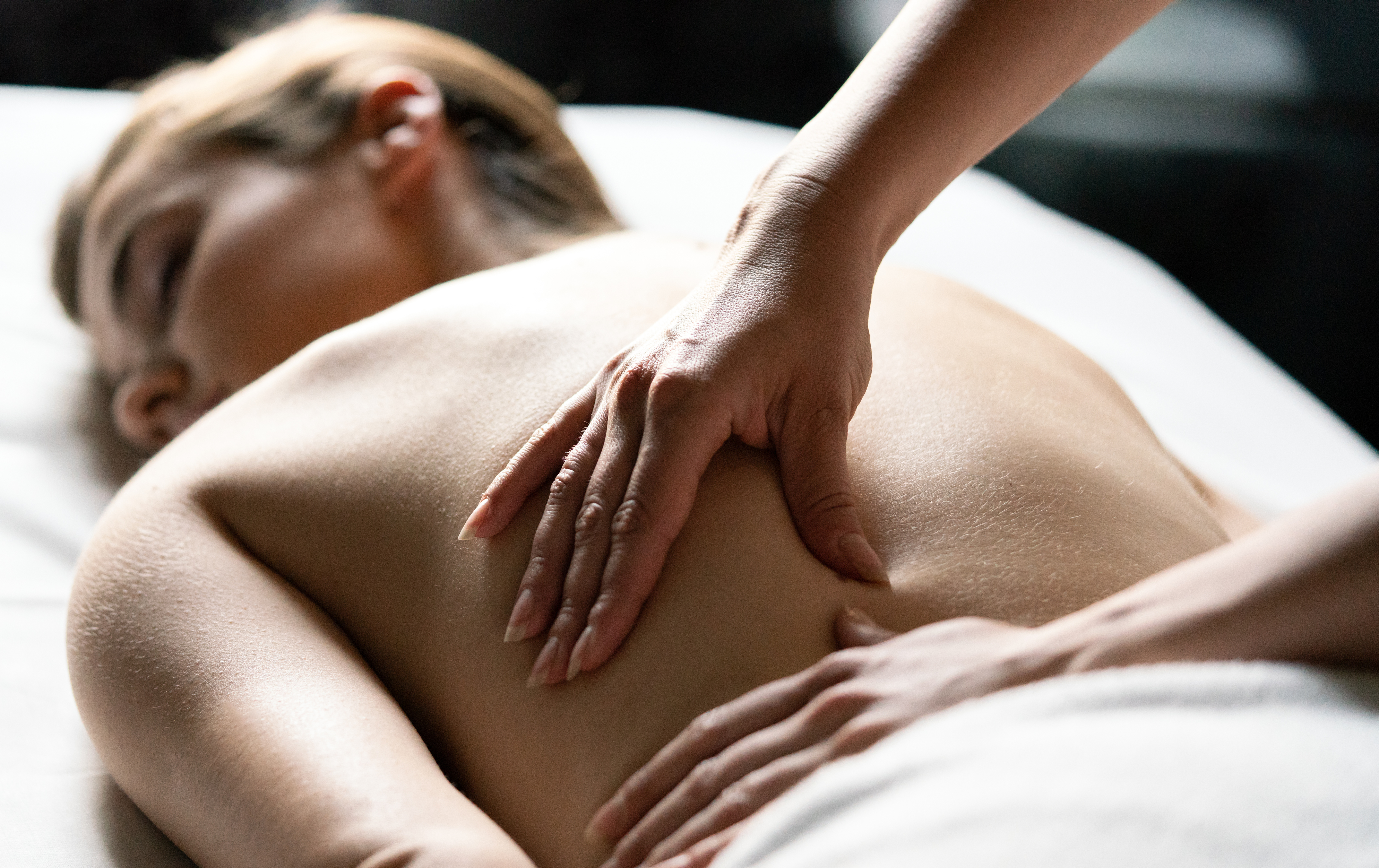
Acupuncture and therapeutic massage
Acupuncture and therapeutic massage are a powerful healing combination. Over the years, many patients have asked me about massage, and I recently decided to expand my practice to include therapeutic massage. I am a strong believer in complementary healing modalities, and I personally love massage. It’s a wonderful tool to include in your self-care toolkit.
Therapeutic massage
Therapeutic massage is a type of massage that involves focused work on soft tissues of the body, specifically, the muscles, tendons, and ligaments. It is sometimes referred to as a medical massage. Therapeutic massage helps release tension, improve range of motion, and heal injuries. This type of massage can also help relieve pain, elicit the relaxation response, reduce stress, and improve your mood. Each individual receives a massage customized to their specific needs. Many pioneering medical institutions like the Cleveland Clinic advocate the benefits of massage, as shown in this Cleveland Clinic article titled Why You Should Try Medical or Therapeutic Massage.
Chair massage
As I was brainstorming on massage offerings, the licensed massage therapist who joined my practice suggested offering chair massage in addition to the traditional 60- and 90-minute full body massage sessions. I was excited to find a variety of research articles detailing the benefits from a 15-minute chair massage. Specifically, research has shown that just 15 minutes in a massage chair has many benefits including reducing tension, stress and anxiety, lowering blood pressure, increasing blood circulation, and strengthening the immune system.
Here are links to a sampling of research studies showing the benefits of a 15-minute chair massage:
- This International Journal of Neuroscience research study found that 15 minutes of chair massage can reduce stress and anxiety and improve alertness.
- This Complementary Therapies in Clinical Practice journal research study found that 15-minute chair massages significantly reduced stress, anxiety, and fatigue in nurses at the Mayo clinic.
How a chair massage works
A chair massage is a massage performed while you are seated in a specialized massage chair that is ergonomically positioned. Your face rests in a comfortable headrest, and special arm rests support your arms. This allows the body to relax, and the massage therapist focuses on relieving tension in the neck, shoulders, and back. The massage is done through the clothes, so there is no need to change or shower after the session. It’s a very efficient way to get quick tension relief.
How to combine acupuncture and massage
I have found many conflicting recommendations on how to best combine acupuncture and massage. Some suggest massage first, then acupuncture. Some suggest the opposite. Others suggest separating the two by varying amounts of time.
In my Classical Chinese medicine training, we were taught to recommend separating treatments by at least 24 hours. This is because our energetic body follows a schedule called the Chinese organ body clock. Every two hours a different organ system is either at its peak function of activity or its lowest activity or time of rest, just like the tides in the ocean. There are 12 different organ systems that follow this schedule over a 24-hour period. You can learn more about this topic in my blog about the Chinese organ body clock.
Waiting 24 hours after an acupuncture treatment or a massage gives your body time to fully take in and process the energetic message you received from your treatment. I often suggest to patients that they consider alternating weekly acupuncture and massage treatments. For example, they have an acupuncture treatment one week and then a massage treatment the following week. This is not to say that following a different schedule will not be effective, rather, it’s a way to ensure the body fully processes the benefit from the specific treatment with no other influences.
Want to talk about how acupuncture and therapeutic massage can help you? I’d love to hear from you. Reach out and email me through our website or call or text 910-622-4269.
About the Author
Ericca Burke is the owner of HAVEN Acupuncture & Chinese Medicine where she provides acupuncture and Chinese medicine treatments in Wilmington, NC. Click this link to read more about Ericca.
About HAVEN Acupuncture & Chinese Medicine in Wilmington, NC
HAVEN Acupuncture & Chinese Medicine is an acupuncture and Chinese medicine practice located in Wilmington, NC just minutes from beautiful Wrightsville Beach. Click this link for contact information and directions. Click this link for a listing and description of services offered.